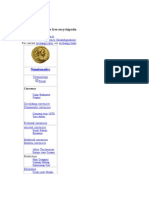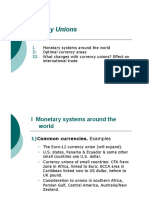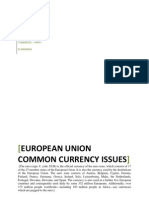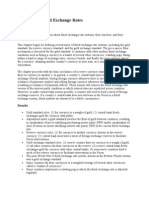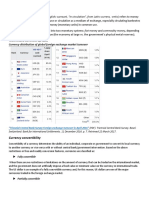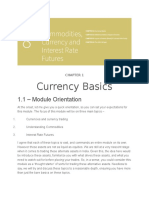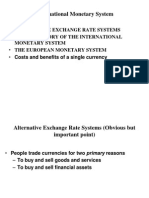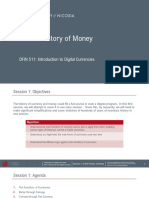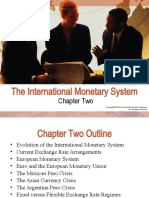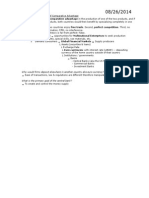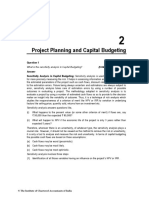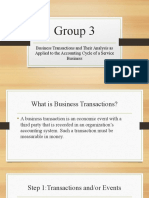0% found this document useful (0 votes)
222 views25 pagesCommon Currency: - by Sumaiya Sherief
The document discusses the history and evolution of currency, including the disadvantages of barter systems that led to the development of formal currencies. It describes some of the earliest common currency unions, such as the CFP franc created in 1945 and the East Caribbean dollar established in 1965 across multiple countries. The euro, introduced in 1999, is provided as an example of a successful common currency today across European nations. Potential benefits of common currencies include reduced exchange rate risks and transaction costs, while challenges involve economic imbalances between countries.
Uploaded by
Sumaiya SheriefCopyright
© Attribution Non-Commercial (BY-NC)
We take content rights seriously. If you suspect this is your content, claim it here.
Available Formats
Download as PPT, PDF, TXT or read online on Scribd
0% found this document useful (0 votes)
222 views25 pagesCommon Currency: - by Sumaiya Sherief
The document discusses the history and evolution of currency, including the disadvantages of barter systems that led to the development of formal currencies. It describes some of the earliest common currency unions, such as the CFP franc created in 1945 and the East Caribbean dollar established in 1965 across multiple countries. The euro, introduced in 1999, is provided as an example of a successful common currency today across European nations. Potential benefits of common currencies include reduced exchange rate risks and transaction costs, while challenges involve economic imbalances between countries.
Uploaded by
Sumaiya SheriefCopyright
© Attribution Non-Commercial (BY-NC)
We take content rights seriously. If you suspect this is your content, claim it here.
Available Formats
Download as PPT, PDF, TXT or read online on Scribd
/ 25

